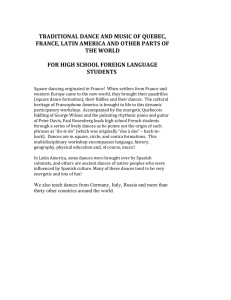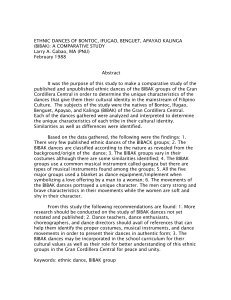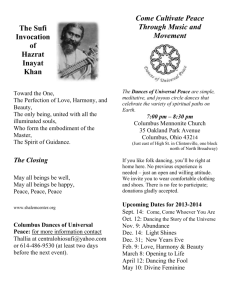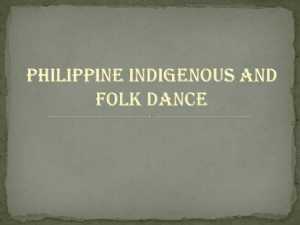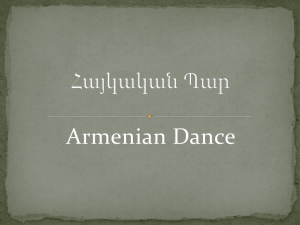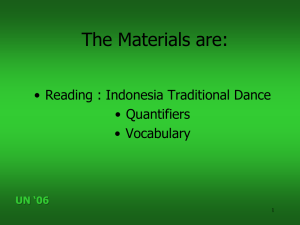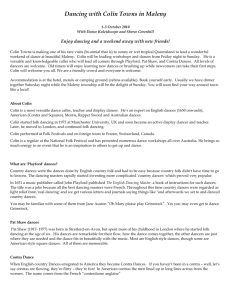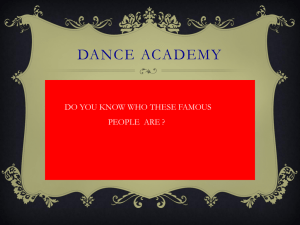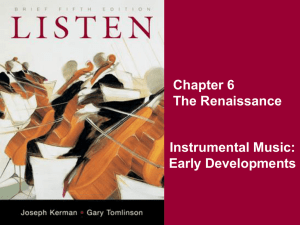The Elizabethan Age Dance
advertisement
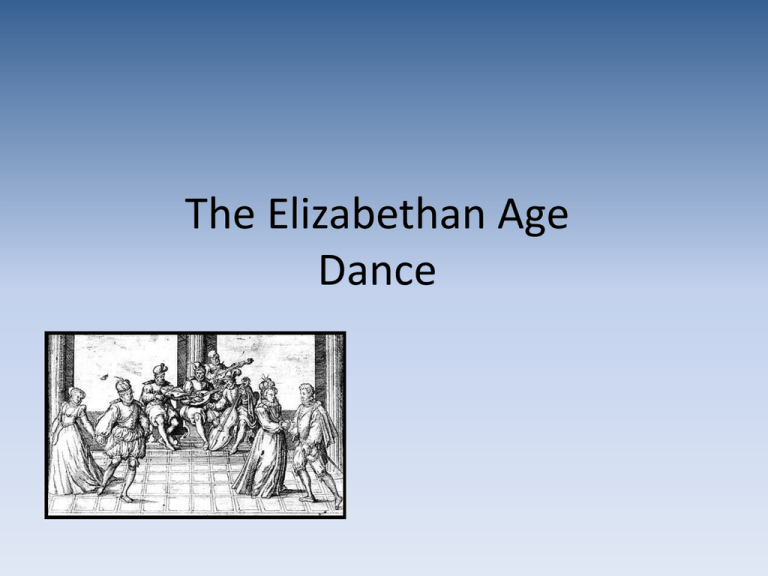
The Elizabethan Age Dance General Facts Dancing was an extremely popular past time during this time and was considered “a wholesome recreation of the mind and also an exercise of the body”. New music and instruments led to the creation of new dances The dances varied to the social classes Court dances enjoyed by royalty, nobility and upper classes were often imported from Italy, Spain, or France. These dance forms varied form the energetic Galliard to the refined Pavane The lower classes enjoyed more traditional country dances such as the Jig, Morris dancing, the Brand, or the Brawle which were usually danced at festivals in Elizabethan, England Upper Class Upper class enjoyed new types of music at court Dancing Masters were employed to teach the new dances These dances were highly sophisticated and had intricate steps, but the old country dances were still popular Many of the court dances were couples The Volt was the only dance which allowed the dancers to embrace closely The form of entertainment call the Masque was more popular with the upper class They were accompanied with music and dance at the beginning, end, and during the interludes The dances usually had names like the ‘Tinkernell’ and ‘Maske of Queens’ Dancing Masters each printed and distributed dance manuals It included different dance steps including walking steps, sliding, stamping, leaping, jumping, and hopping. Queen Elizabeth I Encouraged music and dance Patron of all the Arts and encouraged composers and musicians Continued strenuous dancing into her late 50’s Lower Class They only heard the new music and saw the intricate steps and fashion in theatre Dances were danced by couples in round or square sets Dances were repetitive They were passed down through generations Different types of country dances were popular with everyone Performed at fairs and festivals Dances Upper Class Ballet – Italian dance established at the French court in the 16th Century The Canary – Spanish dance described as “strange and fantastic with a strong barbaric flavor” Lower Class The Jig – Traditionally involved leaps The Hornpipe – Lively dance resembling a jig. The dance became linked with sailors http://www.youtube.com/watch?v=fQ35ZkLkJJ4&feature=related http://www.youtube.com/watch?v=w2fRsxAFV4w&feature=related Cites http://www.elizabethan-era.org.uk/elizabethan-dance.htm
